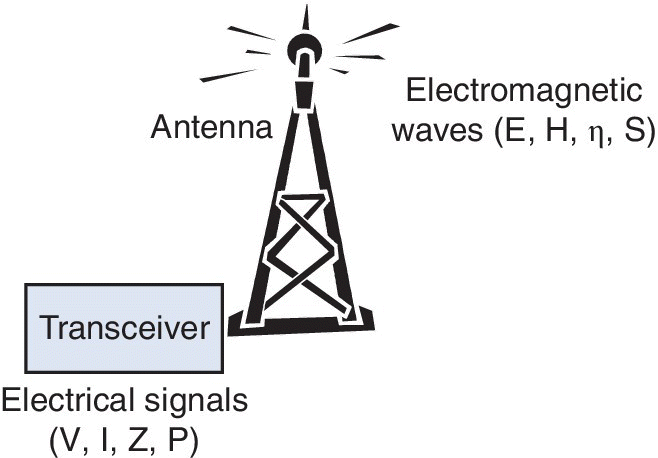2Antennas
Antennas are important components of wireless systems, such as communications, radars, remote‐sensing, and so on. Antenna is a transducer which converts electrical signals (voltage and current) into electromagnetic (EM) waves and vice versa (see Figure 2.1). Therefore, antennas are used for transmitting electrical signals via EM waves in the direction of intended remote receivers, and collecting incident EM waves carrying electrical signals transmitted by distant transmitters. In duplex communication systems, the same antenna can be used both for transmission and reception. By virtue of the reciprocity theorem, an antenna has the same performance in transmission and reception.

Figure 2.1 An Antenna as a Transducer Between the Transceiver (Including Feeder Cables/Waveguides) and the Propagation Medium.
Theoretically, any structure can radiate and receive EM waves but not all structures can do it efficiently. Antennas are conducting or dielectric structures that allow efficient radiation and reception of EM waves. We know from Maxwell’s equations that a conducting structure radiates if the current flowing through it changes sufficiently fast with time and its size is comparable to the wavelenth. An antenna is desired to have low ohmic losses, so that the largest percentage of the power fed at its terminals is radiated. Impedance matching between antenna and transceiver ...
Get Digital Communications now with the O’Reilly learning platform.
O’Reilly members experience books, live events, courses curated by job role, and more from O’Reilly and nearly 200 top publishers.

